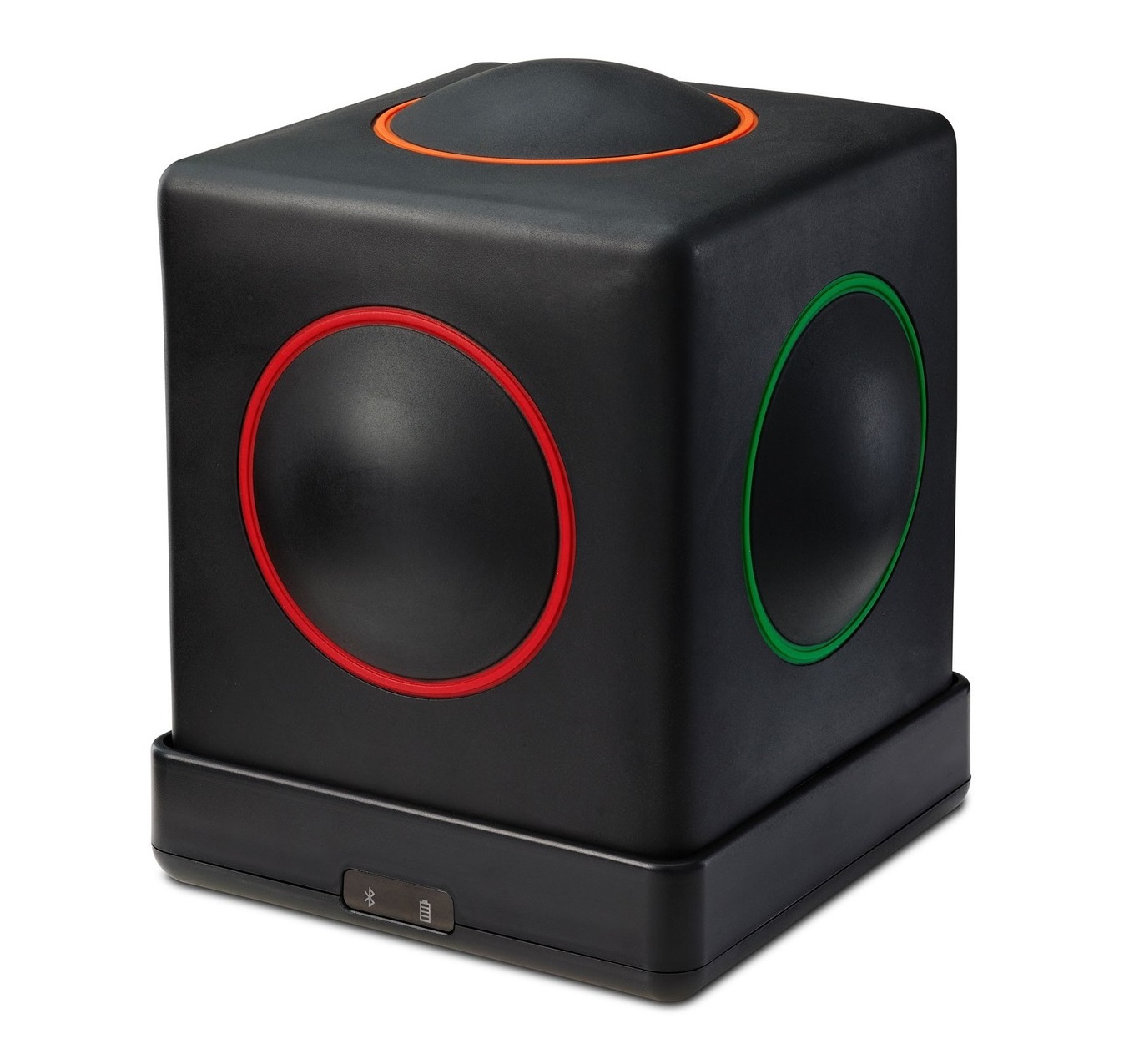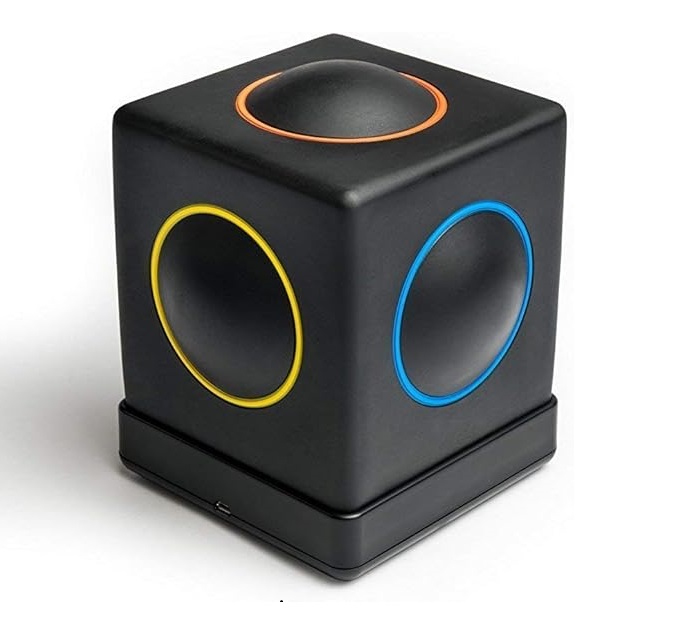Skoog
Electronic Instruments
Europe
Between 1901 and present
Video
The Skoog is a revolutionary electronic musical instrument designed to be inclusive and accessible, enabling individuals of all abilities to engage in music creation. Its unique design and functionality have made it a valuable tool in education, therapy, and personal expression.
Description
At its core, the Skoog is a soft, cube-shaped device that connects to computers or tablets, allowing users to produce a wide range of musical sounds. Each face of the cube is sensitive to touch, pressure, and manipulation, enabling users to interact with it through various gestures such as pressing, squeezing, tapping, or twisting. This tactile interface translates physical actions into musical notes or effects, providing an intuitive and engaging experience.
Type of Instrument
The Skoog falls under the category of electronic musical instruments, specifically designed to be a versatile and adaptive interface for sound production. Unlike traditional instruments that require specific techniques, the Skoog’s design allows for customization to suit individual needs, making it particularly beneficial for those with physical or cognitive disabilities.
History of Skoog
The Skoog was developed in the early 2000s by researchers at the University of Edinburgh, led by Dr. Benjamin Schögler and Dr. David Skulina. It was designed as an inclusive musical instrument to help individuals with disabilities engage in music-making. The initial idea stemmed from the need to create a tactile, easy-to-use instrument that could be played without traditional musical training. After years of research and development, the Skoog was launched as a soft, cube-shaped device with touch-sensitive surfaces, allowing users to create sounds through simple gestures. The development of the Skoog began in the early 21st century, with its initial release occurring in 2008. Over time, it evolved into a versatile MIDI controller compatible with digital audio workstations and educational apps, expanding its use in music therapy, special education, and creative expression. Today, the Skoog continues to break barriers in accessible music technology, enabling more people to participate in music regardless of physical or cognitive challenges.
Construction
The Skoog is constructed from a soft, tactile foam material, making it both durable and comfortable to touch. Its cube shape features five colored, touch-sensitive surfaces, each corresponding to different notes or sounds. Internally, it houses sensors that detect the intensity and type of touch, which are then processed by accompanying software to produce the desired musical output.
Types and Features
Since its inception, the Skoog has seen several versions, with the most notable being the Skoog 2.0. This updated model introduced wireless connectivity, allowing it to interface seamlessly with iOS devices such as iPads and iPhones. The Skoog 2.0 also offers enhanced sensitivity settings and integration with music streaming services, broadening its applications in various settings.
One of the standout features of the Skoog is its adaptability. Users can customize sensitivity settings to accommodate different levels of dexterity and strength, ensuring a personalized experience. The device is compatible with various music apps and digital audio workstations, enabling users to select from a wide range of instruments and sounds. Additionally, its integration with platforms like GarageBand and Spotify allows users to play along with their favorite tracks, enhancing the interactive experience.
Sound Production
The Skoog produces sound by translating physical interactions into digital signals, which are then rendered as musical notes or effects through its software. The accompanying app utilizes physical modeling technology to simulate various instruments, providing realistic and expressive sound outputs. Users can also sample sounds or use the Skoog as a MIDI controller, offering extensive possibilities for sound creation.
Playing Methods
Playing the Skoog involves interacting with its tactile surfaces using various gestures. Users can press, squeeze, tap, or twist the different faces of the cube, with each action producing a distinct sound or effect. The instrument’s sensitivity can be adjusted to cater to individual preferences, making it accessible to users with varying physical abilities.
Roles in Music and Significance
In music, different instruments and technologies serve unique roles, from melody and harmony to rhythm and texture. The Skoog is a highly innovative instrument designed to make music accessible to individuals of all abilities, particularly those with disabilities. As a tactile, cube-shaped device, it responds to touch, pressure, and movement, allowing users to create expressive sounds without requiring traditional instrumental skills. Its significance lies in inclusive music education, therapy, and creative exploration, enabling users to engage with music through simple interactions.
The Skoog can be connected to digital devices and software, functioning as a MIDI controller or standalone instrument, making it valuable in adaptive music-making and special education settings. By lowering barriers to musical participation, the Skoog plays a crucial role in ensuring that everyone, regardless of physical or cognitive limitations, can experience the joy of creating and interacting with music.
The Skoog stands as a testament to innovative design in musical instruments, breaking down barriers and making music creation accessible to all. Its unique construction, customizable features, and wide range of applications underscore its significance in modern music and therapy.
FAQ
What materials are used in constructing a Skoog?
The Skoog is primarily made from soft foam material that provides a tactile feel while being durable enough for regular use. Inside this foam cube are sensors that detect pressure changes when interacted with.
How is the Skoog constructed?
The construction of a Skoog involves integrating pressure-sensitive sensors within a soft foam casing that allows for easy manipulation. This design enables users to produce sound through simple interactions like squeezing or tapping.
What is the main purpose of the Skoog's design?
The main purpose of the Skoog's design is to provide an inclusive musical experience for individuals with varying abilities, especially those who may struggle with traditional instruments due to physical limitations.
 Links
Links
References
 Similar
Similar
Instruments
Other Instrument
Categories



















